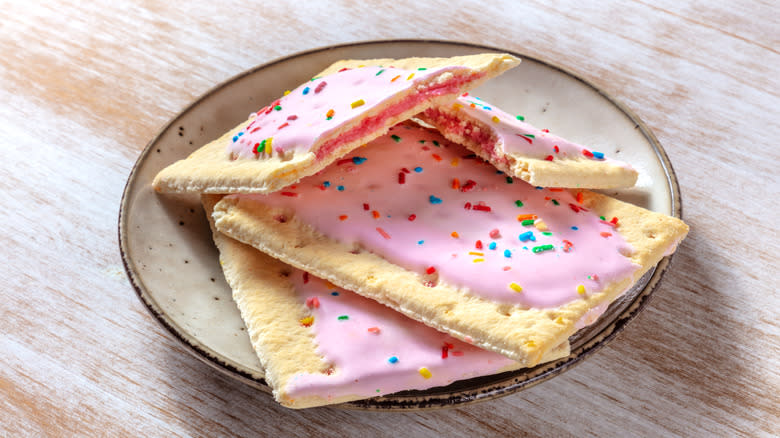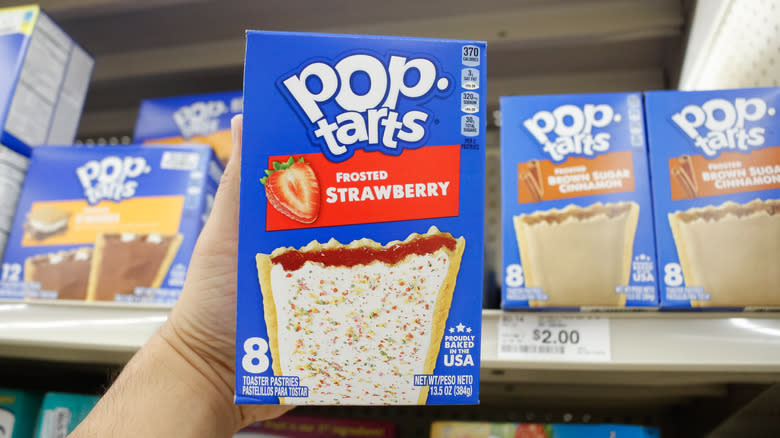Why Are Pop-Tarts Rectangular?

Pop-Tarts may be a nostalgic childhood breakfast item, but the quick convenience of these sweet treats involved a lot of thought behind the scenes. The untold truth of Pop-Tarts is that they were intentionally designed with a rectangular shape to be ready for the toaster; the goal was to emulate a classic breakfast item — toast with jam.
The novel idea of a pre-packaged spin on toasted bread with a sweet spread led the chairman of Kellogg, William E. LaMothe, to enlist the help of "Doc" Joe Thompson and get to work bringing this vision to life. Kellogg also approached William Post, a plant manager for Hekman Biscuit Company, to work on creating a pastry designed for the toaster, similar to what Kellogg's competitor, Post Consumer Brands, was attempting with its similar Country Squares. Post eagerly agreed, with one defining factor of these pastries being the holes spread throughout the rectangular shape. The real reason Pop-Tarts have holes is related to the "toaster-ready" factor. The holes help to keep the Pop-Tart firm and prevent excess heat from building up within the pastry while it toasts.
With flavors that now range from Frosted Blueberry to Frosted Hot Fudge Sundae to Frosted S'Mores and many more, it's hard to imagine a time when icing wasn't the norm. However, the original four pastry rectangles launched in 1964 were plain on top, with filling options of Apple-Currant, Blueberry, Strawberry, and Brown Sugar Cinnamon. Interestingly, frosted Pop-Tarts almost didn't exist because it was thought that the icing would melt in the toaster.
Read more: Frozen Pizzas, Ranked From Worst To Best
Pop-Tarts Were An Instant Success

Often credited as one of Pop-Tarts' creators, William Post died in 2024, but his ingenuity left an impact on his corner of the food world with his contributions to this American classic. While Pop-Tarts initially only launched in Cleveland, Ohio, the success of these toastable rectangles was nearly immediate, and the toaster pastries hit store shelves nationwide one year later in 1965.
In a YouTube video by Kellanova, Pop-Tarts' parent company, Post reflected on how massive the appeal was nearly instantaneous, noting that 45,000 cases of each flavor "just blew off the shelves" in the Cleveland test market. Additionally, the idea to later add icing to each flavor only took one day. It may seem like the success of Pop-Tarts happened easily, but Post explained that the creation process of these famous breakfast rectangles likely would have been more intimidating if he had known how overwhelmingly successful they'd become.
While flavor is important to the success of Pop-Tarts, convenience is undoubtedly the prime factor in the breakfast food's success. The ability to eat them on the go or easily fit them into a toaster like slices of bread has long been part of the initial appeal that still rings true for customers today.
Read the original article on Mashed

